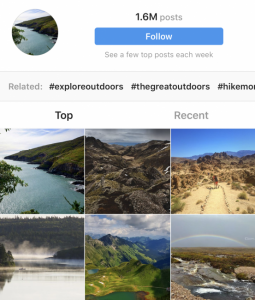
It’s no news that social media makes for a big part of the marketing activity of any B2C (sometimes B2B, too) company or solopreneur, especially thanks to the boom of mobile apps usage and a more integrated Web experience with the average user’s life.
However, social media marketing gets sometimes pushed to the back of the to-do list to make room for other owned channels, with the risk of losing much in terms of nurturing your audience on social and, eventually, turn them into subscribers.
So while your list is the top of any marketing effort you’ll ever make — and the ideal place where fans you gain from social will land and stay — it’s important to make room for social marketing in your weekly schedule to avoid falling behind and losing that slice of your target audience who thrives on social networks.
Yes, Social Media Marketing Is No Joke
According to the 2016 Social Media Marketing Industry Report by Social Media Examiner, social marketing provides marketers with more exposure for their business (89% of respondents), an increase in web traffic (75%), more loyal fans (68%) and generated leads (66%).
Social media is a really powerful source of data and ideas that will direct your blogging and business efforts towards success; in fact, it will help you find new topics to blog about — that your readers are guaranteed to read — and address the questions your audience asks on a number of problems in your niche.
That means that when you prioritize social media you are pretty much keeping up to date with what’s going on in your niche or industry — something that will always keep you one or more steps ahead of your competitors.
Another reason for giving social media a higher priority in your schedule is keeping an open channel with your audience, so that they will most likely engage with you and follow your updates than if you were more focused on your blog and dedicated only a few hours a month to social marketing. In other words, it’s easier to talk to people if you hang out where they do rather than trying to convince them to follow you to your “house” (not that you shouldn’t try, of course).
Andrew Stanten, president and founder of AltitudeMarketing.com, wrote an interesting article at CIO.com on why social media is no longer optional, especially if you have a blog or a business in the tech industry. He lists 5 reasons that go from traffic generation to customer service, and among them, building credibility and engagement is probably the most important and even the tougher to achieve, but you can do it if you take good care of your content and your fans.
Social marketing can be a lot of work, but rewarding for both your business and your relationship with your audience.
6 Ways For Giving Social Media More Room In Your Marketing Plan
The above-mentioned 2016 industry report highlights how most marketers (63%) spend at least 6 hours a week on social media, which means an average 1 hour/day.
It really takes so little in terms of time! But, of course, even a little time means a lot when it’s planned and focused.
Let’s see how to do this in practice.
1. Schedule and Stick to It
You have to make time for social media marketing, like you do for blogging and writing and sending out emails to your list.
First of all, take your calendar and locate plausible “down times” you can use for social marketing. For example, you could dedicate one hour in the morning, before you start blogging or other business activities, to engaging with your audience on social networks.
Just an hour so it’s not too distracting, but enough to engage and take note of any changes, questions, doubts and hot topics in your niche or industry, that you can write about in your newsletter or blog in the next few days.
At the end of your day, you could dedicate another hour to posting your updates, announce new content, promote a product, and so on. You can also use this time to reply to any questions and mentions you received during the day.
Two hours a day is a good load if you run a solo business of you are a blogger with a small audience. The bigger and more demanding your audience and following, the more time you will need to schedule in, as the industry report also confirms.
2. Setup Notifications On Your Phone
You could activate social notifications on your phone to readily respond to any follower or user asking questions or mentioning your business handle.
The downside of this method is that it can be very distracting, so I suggest you don’t use this method unless you do it during the pre-scheduled times you know you will be doing social marketing.
Try to avoid notification outside of those hours.
3. Use Hashtags the Smart Way
Use them in your social posts and in your content, too. Connect your hashtagged blog posts to your hashtagged social posts — it will give your content and products some boost right away.
Also, remember to use hashtags whenever you respond to customer/reader mentions — it will increase your brand visibility (and customer love).
4. Create a Weekly Twitter Chat Around Your Content
Or monthly, if you prefer keeping chats spare in your plan. What’s important is that you consistently turn your content into a subject of discussion with your target audience and your current followers and subscribers. This is also a good way to “recycle” your old content and bring it to the table again.
If you need an example, look at how ViralContentBuzz.com and MyBlogU.com handle twitter chats (two a week) and the traffic and results this kind of interaction brings them.
Also, Hootsuite’s Matt Diederichs’ A Step-By-Step Guide to Twitter Chats: The Complete Guide is a must-read.
5. Pay-For-Share Freebies
Services like PayWithATweet.com, SocialPay.me and WordPress plugins like OnePress Social Locker make it easy to spread the word about your content and your social channel, because sharing is the only way for your interested users to get the content they want.
Quality, informational content (ebooks, guides, etc.) and visual content are good candidates for pay-for-share offers. Mini-courses are also a good idea.
6. Pick the Right Social Channels
Don’t spread yourself or your marketing department too thin. Focusing on a few social media that you know will bring results is more important than having a presence on every existing social network.
Need a hint? The 2016 industry report mentioned in this post indicates that Facebook (93%), Twitter (76%), LinkedIn (67%) and YouTube (53%) are the most important platforms for and most used by marketers. In particular, focus on Facebook if you are a blogger or own a B2C company, and on LinkedIn if you run a B2B.
A Final Piece of Advice
When you engage with your audience on social media, address their pain points; don’t make it all about you like you’d do on your personal profile. Andrew Stanten in his article at CIO.com gives this piece of advice: “share not just information about your company, products and solutions, but information about what’s going on in the industry. Limit self-promotional posts — on Twitter, especially — to about 20 percent of your posts”.
Also, because most of the social media usage happens on mobile, make your content available for mobile users, and especially for purchase via mobile if you sell goods. Links from your social channels will often be opened by mobile users than desktop users.
Remember that you have to keep an active social presence to nurtures your audience daily or weekly and show that you are open to listening and attending to their needs.
In other words, treat people like people and you will win their hearts.
Digital & Social Articles on Business 2 Community
(15)






